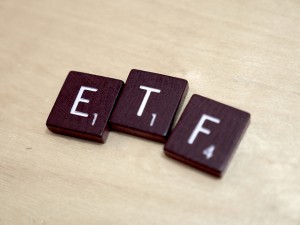Getting Clients into ETFs

ETFs are a burgeoning trend for investors looking to create a diverse portfolio, but some investors have been hesitant to enter the fray. These investment vehicles are excellent choices for investors who want diversification but do not wish to expose themselves to the risk that comes with building diversity with individual stocks and bonds. Some just don’t have the time available to do the necessary research it requires to hold long positions in specifics securities. There are a plethora of ETF products in the markets that offer an organized pre-packaged portfolio option that comes in an easy to purchase fund.
To get clients excited about the possibilities and returns that ETFs could bring to their portfolio, there are some things that financial advisors can do to help engage clients in the process of choosing successful ETF products for their portfolio:
Sector Strategy Brainstorming
The risks in picking individual sector ETFs can be high since the stocks of a sector can be impacted greatly by a competitor’s stock. If a client wants to strike out on their own to research or purchase an ETF, a prudent advisor will make sure that clients are aware of the risks or caution against making a purchase until they become more comfortable with working with this class of products. These particular securities are best suited for intermediate to experienced investors.
There has been a huge push of products out into the market by fund sponsors of sector ETFs. This gives investors a wide array of securities to consider. Being mindful of the construction of the underlying indexes is an indicator of overall fund performance as not all ETFs were created equal. The common index strategies and methods are focused around market cap weighted, equal weighted, and factor weighted funds. Each strategy comes with their own list of pros and cons which advisors should analyze with the client alongside a discussion of their individual goals.
Investors who are new to ETFs should approach adding sector funds as a tactic, rather than part of the foundation of their portfolio. Position sizes should be moderate to limit exposure to a particular sector to avoid a situation where the portfolio is based on a single outcome.
Discuss Active Managed Funds vs. Passively Managed Funds
This is an important distinction as each type comes with its own set of criteria, pros and cons. Actively managed funds allow managers to put controls on risk, as well as make intraday trades, all in the effort to outperform benchmarks. Passive, or traditional ETF products, only change when there is a shift in allocation within the associated benchmarks, such as a stock entering or exiting the S&P 500. When investors choose to purchase an active ETF, this comes the additional risks of underperforming the market. It should also be noted that the fee structure is typically higher than that of the passively managed funds available on the market.
Don’t Forget Risk
All too often, investors make the mistake of looking only at performance as their criteria for evaluation when selecting an ETF. It is very important that clients and financial advisors do not forget to also evaluate the risk associated with the product itself.
This is when a metric like the Sharpe ratio can be useful for investors. This risk vs return calculation tracks overall performance in relation to the rate of return on a risk-free investment like Treasury bonds or bills. The higher the Sharpe ratio, the better a security’s return is in comparison to risk-free investment strategies and approaches.
Evaluate ETF Expense Ratio in Mind
When mutual funds were the only option for aggregation in investments, there was frequent mention about the expense ratio becoming a critical element to pay attention to when choosing between funds. It’s commonly forgotten that ETFs also have expense ratios because these products trade just like stocks. Investors are mistaken to think that the brokerage trade commission is the only expense that is associated with an ETF investment.
Investors who wish to diversify their portfolios but do not have the time to research individual stocks or are afraid of overexposure in a single security can find that ETFs satisfy both of these criteria. It is important that prudent advisors go over the risks associated with ETF investing when a client first expresses interest in an ETF. Knowing risks, whether the fund is actively or passively managed along with fees and the expense ratio associated with the ETFs of interest can make the decision, and hopefully the outcome, a positive one.
